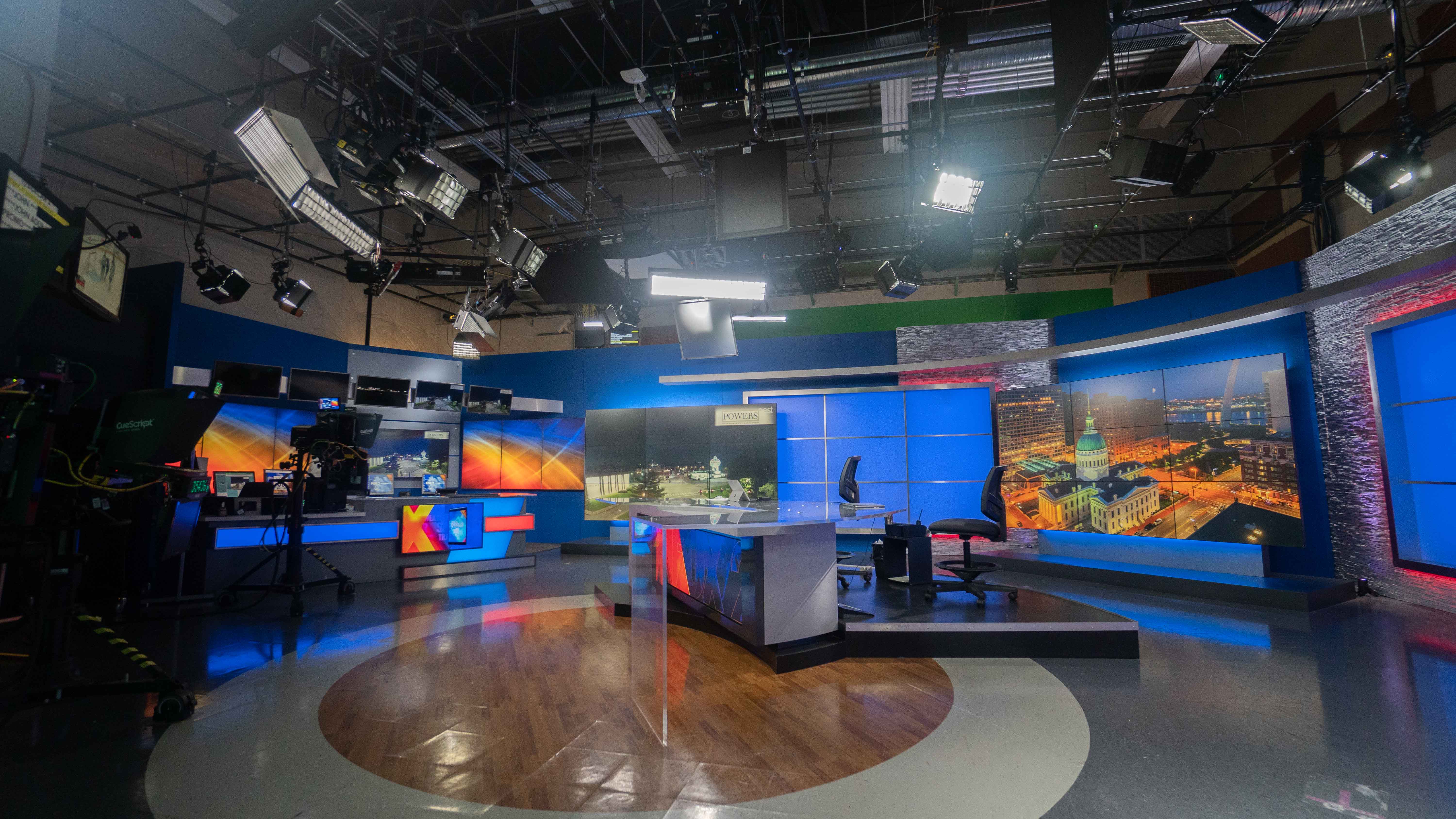Get the LED In
ONTARIO—TV engineers in charge of older broadcast studios know that they have to replace their aging incandescent (e.g. tungsten) lighting some day, and that the popular choice is LED (light-emitting diode) fixtures.
That said, LEDs are so technologically different from incandescent lamps, developing a transition plan can be daunting for engineers schooled in the older tech. To ease the task, TV Technology has compiled this list of “must-knows” and myths about LED studio lighting.
COOLER AND CHEAPER

When the AT&T Entertainment Group decided to move their syndicated Dan Patrick sports radio/TV show into a new 20,000 square foot facility, they opted to illuminate using Litepanels’ Gemini and Astra soft LED panel fixtures instead of incandescent lamps.
“The decision came down to the temperature of the lights,” said Eric Jones, associate director of creative operations for AT&T Mobility & Entertainment Group. “The talent always complained about the heat of the old incandescent lights and how hot the studio was. In contrast, the Litepanels run cool, which keeps the talent comfortable and saves us money on air conditioning.”
The reason tungsten lights are so hot is because up to 94% of the electricity they consume is released as heat rather than visible light, according to Pat Grosswendt, co-founder of Litepanels (now owned by The Vitec Group).
“LED lights don’t emit this kind of heat; they use their power to generate visible light,” he said. “This is why LEDs need much less power to generate the same amount of illumination as incandescent lamps.”
SAVING MONEY
The cost savings from using LEDs in-studio, rather than incandescent lamps, are significant. “You can count on cutting your lighting power consumption by two-thirds, and your air conditioning costs by two-thirds as well,” said Randy Read, specifications lighting sales manager for ARRI. “You’ll also save money not having to change burnt-out bulbs or gels, because the LED lights are color-adjustable.”
“In fact, the ROI from installing LEDs is three years or less, based on money saved due to reduced operating costs,” said Grosswendt.
In the early days of LED lighting, there were some issues associated with color stability.
“As the LEDs aged, the color temperature would sometimes drift towards the green end of the spectrum,” said Rich Pierceall, vice president of Cineo Lighting. “This shift was due to manufacturing issues that have since been resolved. Today’s LEDs hold their color temperatures reliably year in, year out; allowing stations to ‘set it and forget it’ once they get their new LED lamps and lighting boards installed and calibrated.
ADVANTAGES FOR MULTISTATION BROADCAST STUDIOS

In a bid to cut operating costs, TV group owners are using one common studio to produce newscasts for two or more of their stations. This is why Emmy-award-winning lighting designer Nicholas Hutak—who has designed more than 130 news sets since 1995—chose LED lighting for these multinewscast studios.
“In Florida, I designed a news set that was shared by three different stations,” said Hutak. “Thanks to our multicolor LED light fixtures, I was able to preset three distinct lighting looks for each of these broadcasts. Going from one station newscast to the next is as easy as pushing a button; covering for the lack of lighting directors in today’s lean TV operations.”
Hutak uses the same approach to differentiate programs shot in one of his other client’s studios. “This degree of color control could not be achieved with conventional lighting,” he said.
In theory, it is possible to swap LED lamps for incandescents on a one-to-one basis. But doing so is inefficient because A) one LED can often do the work of two or more incandescents, and B) using LEDs effectively requires installing a lighting panel tailored to work with this technology.
This is why broadcast engineers who are new to LEDs would be wise to hire a qualified lighting designer to design and install this new technology.
“In reality you should do this, because LEDs and incandescents are two totally different kinds of light,” said Toby Sali, co-owner of BB&S Lighting. “If you personally don’t know LEDs, you need to use someone who does.”
KEEPING UP APPEARANCES
In the old days of “hard” incandescent lighting, it could be difficult to make anchor people look good on air. The hard lights generated shadows in anchors’ eye sockets and under their chins; accentuating the appearance of aging over the years.
“The ‘soft light’ generated by LEDs can smooth out these shadows, creating a more subtle and youthful look for on-air talent,” said Frieder Hochheim, president of Kino Flo Lighting Systems. “This is a particular benefit in HD today and going forward as broadcasters move to 4K, where every pore is visible on camera.”
Get the TV Tech Newsletter
The professional video industry's #1 source for news, trends and product and tech information. Sign up below.
James Careless is an award-winning journalist who has written for TV Technology since the 1990s. He has covered HDTV from the days of the six competing HDTV formats that led to the 1993 Grand Alliance, and onwards through ATSC 3.0 and OTT. He also writes for Radio World, along with other publications in aerospace, defense, public safety, streaming media, plus the amusement park industry for something different.

